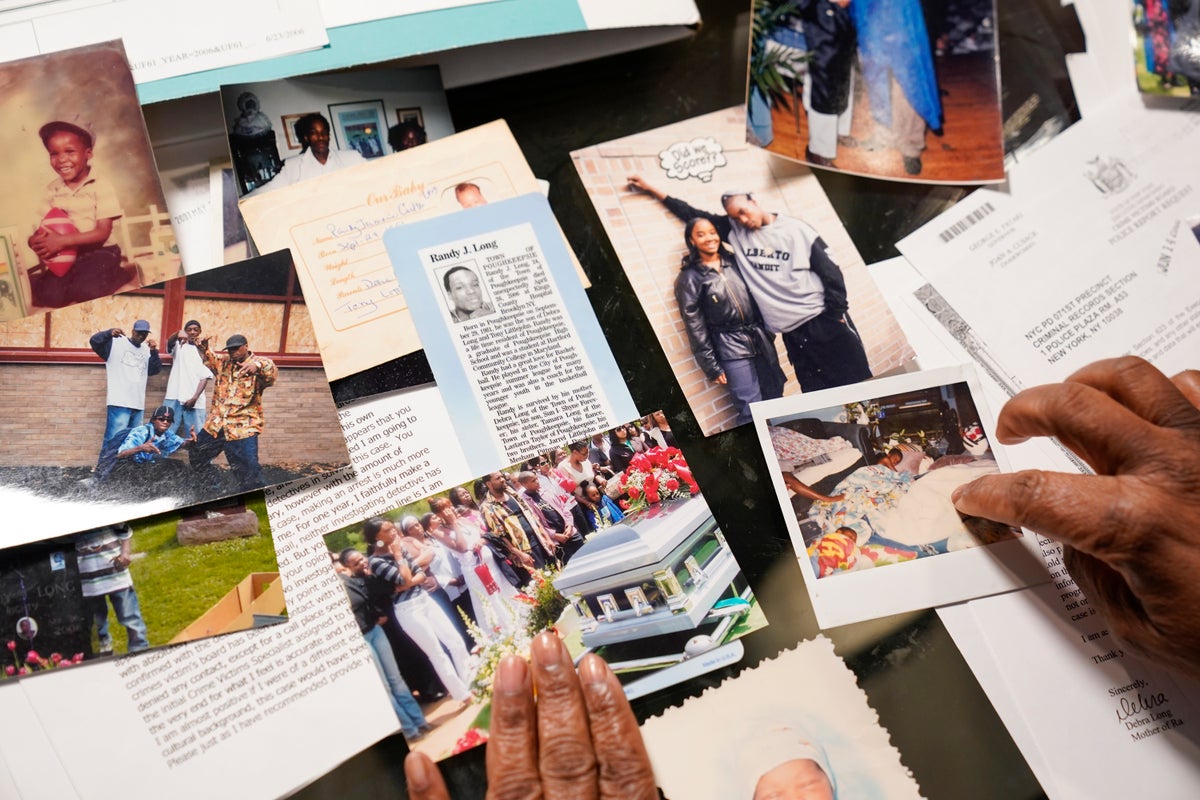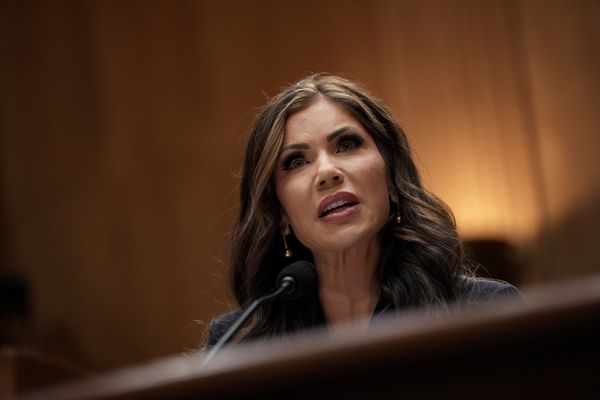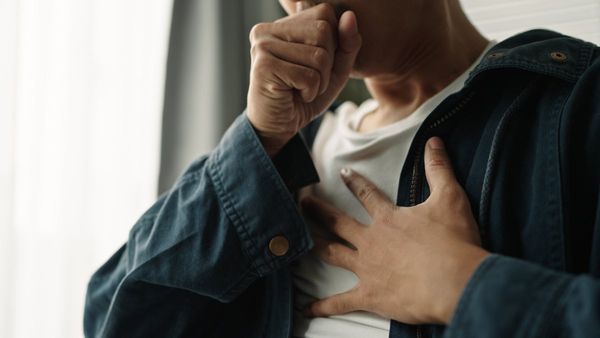
EDITORS/NEWS DIRECTORS:
The Associated Press found in an extensive review of state data that Black victims are more likely to be denied by victim compensation programs in many states, and almost three times as likely to be denied because of reasons that put a magnifying glass on their actions before or after they’ve been victimized.
Every year thousands of people seeking help with medical expenses, funerals, crime scene cleanup or grief counseling after being the victim of a violent crime receive a letter from their state victim compensation program denying their request. Those letters say the program or police believe the applicant's actions provoked, contributed to or caused their victimization, or they’re accused of not cooperating, and often those subjective decisions disproportionately are given out to Black families.
We collected five years worth of reports from the U.S. Office for Victims of Crime. That data, reported annually by state programs as part of a requirement to receive federal matching grants, tracks the voluntarily provided race of victims. It collects the number of denied or closed cases and the reason, but does not break down denials by race. So, we asked states for denial data at the state level for 2018 through 2021, including the race of the victim/applicant, the crime they reported, the reason for the denial and how many successful appeals were made.
What we found was 51 disparate systems in the states and Washington, D.C. that largely make their own rules on who gets denied and why. Oversight from the federal government is minimal — and in some states, the programs are dark little corners of larger departments that rarely get attention or scrutiny unless they fall short on funds.
___
READ AP’S COVERAGE
Black victims of violent crime disproportionately denied aid
Takeaways from AP report on racial bias in states’ crime-victim compensation programs
___
VIEW THE DATA
In all, 23 states gave us detailed data on race:
Arizona
California
Delaware
Georgia
Hawaii
Indiana
Iowa
Maryland
Massachusetts
Michigan
Montana
Nebraska
Nevada
New Hampshire
New Jersey
New York
Oregon
Pennsylvania
Rhode Island
South Dakota
Tennessee
Wisconsin
Wyoming
— The compiled data is available in two Excel sheets, one that has overall breakdowns of denials by race in all the states that provided usable data, and one that includes a tab for each state that provided detailed data on denials by race showing a breakdown of applications and denials by each race category for each year, as well as a breakdown of the yearly behavior-based denials by race when it could be discerned.
Overall breakdowns: https://interactives.ap.org/localize-it/2023/victims-compensation/victims-compensation-overall.xlsx
State-level details: https://interactives.ap.org/localize-it/2023/victims-compensation/victims-compensation-state.xlsx
— Note: A handful of other states gave us data without race information, and Vermont provided only a small piece of the race data we asked for.
— A more detailed file with notes on the data available in each state is here: https://interactives.ap.org/localize-it/2023/victims-compensation/victims-compensation-data.html
___
HOW WE DETERMINED A STATE HAD A DISPROPORTIONATE NUMBER OF BLACK DENIALS
We used the reports states submitted to the U.S. Office for Victims of Crime to standardize the number of applications received by programs in determining what percentage of claims each racial group accounted for. And then we used the state denials data we requested to determine the percent of denials given out to people of different races including a category for not reported (or not tracked).
We used the state reported data to determine behavior-based denials like contributory misconduct, lack of cooperation, previous criminal convictions and a handful of others. We calculated the share of those denials for each racial group in the 20 states that provided that data. (California, Hawaii and Indiana provided data in a format that didn't allow for this kind of analysis: They provided a table for each factor, so the factors couldn’t be considered in combination with one another.)
Be aware that almost every state reported denial numbers on the state level that did not match what they reported to the federal government, even after we aligned the data to the same reporting period. Some were only a handful off, but others were hundreds or even thousands fewer than they had reported to the federal government.
___
DENIALS vs. APPLICATIONS
In many of the 23 states, Black applicants made up a larger percentage of the denials pool than of the applications pool. Sometimes the difference was a percentage point or two, and in other cases it was as high as 16 percentage points.
These are some of the states with the highest disparities between Black applications and Black denials. Other states in our data had large disparities in other racial groups, but much fewer than those with disproportionate denials for Black applicants.
— Delaware: Black applications 46.26% vs denials 62.46%
— Indiana: Black applications 21.22% vs denials 36.35%
— (asterisk)(asterisk)New Jersey: Black applications 41.35% vs denials 55.29%
— Georgia: Black applications 36.58% vs denials 45.11%
— Tennessee: Black applications 48.39% vs denials 56.29%
— California: Black applications 13.13% vs denials 21.15%
(asterisk)(asterisk)In New Jersey, the numbers for 2018 and 2019 skewed the percentage of denials higher. The state overhauled several laws related to its program, including no longer denying people with criminal histories, and the percentage of applications vs. denials reached near-parity during 2020 and 2021.
___
BEHAVIOR-BASED DENIAL DISPARITIES
We found that in most states, even those where denials and applications were in parity, Black applicants were more likely to be denied for behavioral reasons like contributory misconduct, which can be anything from using an insult during a fight to police finding drugs on the ground near a shooting.
— Delaware: 73.9% of behavioral denials were to Black applicants
— (asterisk)New Jersey: 67.11% of behavioral denials were to Black applicants
— Iowa: 31.47% of behavioral denials were to Black applicants
— Nebraska: 38.1% of behavioral denials were to Black applicants
— Nevada: 35.37% of behavioral denials were to Black applicants
— (asterisk)(asterisk)New York: 44.89% of behavioral denials were to Black applicants
— (asterisk)(asterisk)Pennsylvania: 36.99% of behavioral denials were to Black applicants
— Tennessee: 63.64% of behavioral denials were to Black applicants
— Georgia: 49.49% of behavioral denials were to Black applicants
— (asterisk)(asterisk)Michigan: 53.5% of behavioral denials were to Black applicants
(asterisk)Again New Jersey’s numbers were so high because of the 2018 and 2019 denials.
(asterisk)(asterisk)New York, Michigan and Pennsylvania had pretty close to parity percentages between overall Black applications and overall Black denials, but disproportionately high Black behavioral denials.
___
APPEALS
We also found that only a handful of states keep records on appeals of those decisions. In some states, granted appeals are folded back into data and the record of a denial is erased, making it again hard to get a full picture of how these decisions are made. In some states, agencies like courts or workers’ compensation boards or even the secretary of state make decisions on appeals, and programs referred requests to them for appeals data, which was largely unavailable.
___
OTHER WAYS TO USE THE DATA
Seeing how different the overall numbers of denials were on the federal reports vs. state data in some states, we decided to keep the two pools of data separate in our analysis. BUT, in your individual state, there might not have been a large difference, making it appropriate to use the federal applications data, divided by the state denial data to determine a percent denied for each racial group. And if there was a large difference, like in California, you could ask about it and note the answer to clear the way to say something like “X% of Hispanic applicants were denied, according to data provided by the state.”
And the percentages aren’t the only portion of the numbers worth looking at. In South Dakota, for example, with its relatively low overall Black population, there were only 14 denials of Black applicants between 2018 and 2021. But 13 of those people were denied for behavior-based reasons. Sometimes the numbers are more telling than the percentages.
___
WAYS TO FIND VICTIMS
— Reach out to victims advocates, and look at what organizations the state has awarded federal victim services grants to. Some states require organizations who get that money to help victims fill out compensation applications, so they may be able to connect you to victims willing to tell their stories.
— Look for a Crime Survivors for Safety and Justice chapter in your state. One of the group’s main goals is reforming victims compensation programs.
— Check if your state has a portion of the appeals process that requires people to go to court. It’s possible in a handful of states including Ohio to find people through court records — though many that we tested had very finicky search systems that required exact phrasing. One way to get around that is to ask for the name of the attorney who represents the agency in those appeals and search by that attorney.
___
WHAT IF MY STATE ISN’T LISTED?
There are some tips in the data documentation file to make another attempt to get the race data in a handful of states like Colorado, Ohio and Florida.
But the racial disparities aren’t the only story that can be told about victims compensation programs. (Stay tuned for at least two more stories in our coverage!)
We looked at the role police play in denials in different states, including asking for Law Enforcement Verification forms. We looked at state laws, administrative codes and federal audits of the programs and dove into how those were applied. You can see in some of the raw data from states that they largely don’t use behavior-based denials for domestic violence claimants or sexual assault survivors. But there were a handful of states that denied a large number of domestic violence reporters for contribution.
Look at those sources, some of which are included in the ReadMe, and feel free to reach out to our reporters, Claudia Lauer at CLauer@AP.org, and Mike Catalini at MCatalini@AP.org. Please include Victims Comp in the subject line.
___
ADDITIONAL REPORTING QUESTIONS
— Does your state's victims compensation program have any specific behavioral denial reasons in its rules/ laws, like denying people for back court fines or fees that are most likely from unrelated crimes sometimes as small as trespassing or unpaid tickets — or unpaid child support? Do those disproportionately affect denials of specific racial groups?
— How does your state’s program treat other ethnic or racial populations that might be large enclaves you cover? Have they made an effort to make sure the documents are put out in other languages? Do they cover culturally relevant needs? We found states that have expanded coverage of Native American burial and cleansing rituals, for example. But what about ceremonies in large populations of Hmong in northern states?
— Is your state an outlier in its restrictiveness? Most states make deadline exceptions for abuse victims or sparingly deny them for contribution. If your state doesn’t, then it’s an outlier and it would be worth looking at why.
___
GRAPHICS YOU CAN USE
— Denials of Black victims compensation claims were disproportionately high. A graphic showing the percentage point difference between the share of victims compensation claims and the share of victims compensation claim denials for Black and white applicants:
<!-- start AP embed -->
<iframe src="https://interactives.ap.org/victims-compensation/visuals/ClaimsVsDenials.html" class="ap-embed" width="100%" height="600" frameborder="0" scrolling="no" marginheight="0"></iframe><script defer src="https://interactives.ap.org/victims-compensation/resize-client.js" type="text/javascript"></script>
<!-- end AP embed -->
— Black victims were more likely to be denied for behavior-based reasons. A graphic comparing the shares of Black, white and all applicants’ denials that cited behavior-based reasons like contributory misconduct:
<!-- start AP embed -->
<iframe src="https://interactives.ap.org/victims-compensation/visuals/BehaviorBasedDenials.html" class="ap-embed" width="100%" height="600" frameborder="0" scrolling="no" marginheight="0"></iframe><script defer src="https://interactives.ap.org/victims-compensation/resize-client.js" type="text/javascript"></script>
<!-- end AP embed --> ___ Localize It is an occasional feature produced by The Associated Press for its customers' use. Questions can be directed to Katie Oyan at koyan@ap.org.







